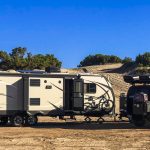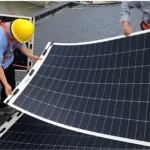Table of Contents
We usually say that having solar panel bypass diodes extremely shade-tolerant, shade-tolerance being the ability of a solar panel to output as much power as possible in non-ideal lighting situations. Whether it’s the shadow of a tree branch, a nearby utility pole, dust + dirt, or even bird droppings, conventional solar panels are not able to output meaningful amounts of power, but instead heat up the internal solar panels (e.g., solar cells and bypass diodes) until they fail.
Bypass diodes are connected in parallel with individual solar panels to provide a path of current around them in the event of a cell or panel failure or open circuit.
What is Solar Panel Bypass Diodes?
Bypass Diode Definition
A bypass diode is an electronic component mounted on a solar panel. The role of the bypass diode is to prevent a component in the array or a part of the component is shaded or failure to stop generating electricity, in the component bypass diode at both ends of the diode will form a forward bias to make the diode conduction, the component string work current bypasses the fault component, through the diode flow, does not affect the other normal components of the power generation, but also to protect the component to be bypassed to avoid being subjected to higher forward bias or due to the “hot spot effect” heat damage. It also protects the bypassed module from damage due to high forward bias or heat generation due to the “hot spot effect”.
Bypass diodes are usually installed directly in the junction box, depending on the power size of the module and the number of cell strings, 1~3 diodes are installed.
Bypass diode is not required on all occasions, when the components are used individually or in parallel, there is no need to connect the diode. For a small number of components in series and a better working environment, you can also consider not to use the bypass diode.
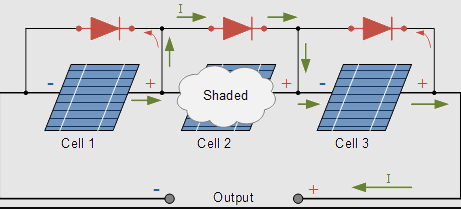
Principle of diode protection circuit
The most common function of a diode is to allow current to pass only in a single direction (known as forward bias) and to block it in the reverse direction (known as reverse bias).
When forward voltage bias is generated, the mutual suppression of the external electric field and the self-built electric field increases the diffusion current of the carriers causing the forward current (which is the cause of the conductivity).
When the reverse voltage bias, the external electric field and the self-built electric field to further strengthen the formation of a certain reverse voltage range in the reverse bias voltage value is not related to the reverse saturation current I0 (which is the reason for the non-conductive).
When there is an external reverse voltage bias, the external electric field and the self-built electric field are further strengthened to form a reverse saturation current I0 that is independent of the reverse bias voltage value in a certain reverse voltage range.
Blocking and bypass diodes for solar panels
Commonly used are A blocking diodes and bypass diodes in solar systems and solar panels.
Diodes are widely used in solar panel installations. They are used as blocking devices because they prevent current backflow (unidirectional flow of current). They are also used as bypass devices to maintain the reliability of the entire solar power system in case of solar panel failure. Therefore, there are two main types of diodes used in solar systems:
- Blocking diodes: blocking diodes allow current to flow from the solar panel to the battery, but prevent/block current from flowing from the battery to the solar panel, thus preventing the battery from discharging.
- Bypass diode: if one of the panels in a multi-panel string fails, a bypass diode is used, which bypasses the failed panel by providing an alternative flow path for the current, thus maintaining continuity of power generation.
How are blocking and bypass diodes used in solar installations?
Blocking Diode Configuration
Connected in series with a solar panel. It is always installed overnight. To prevent this, a blocking diode is installed. It allows current to flow from the panel to the battery, but prevents the flow in the opposite direction from discharging the battery, the diode[/caption] In this setup, during the daytime the solar panel (which is at a high potential) generates power and charges the battery (at night, when the panel is not generating any power (at a low potential), the battery is at a higher potential. There is a possibility of current flowing from the battery to the solar panel, thus protecting the module.
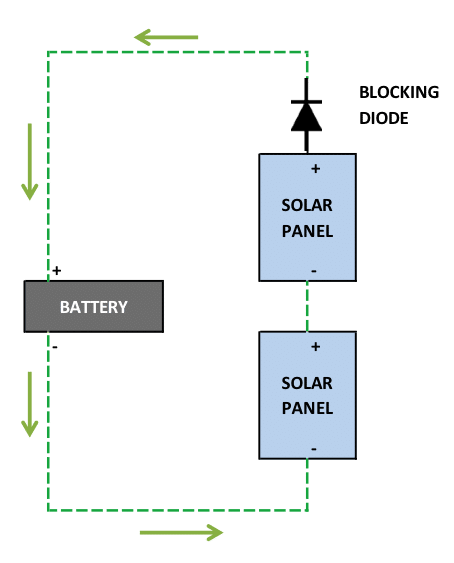
Bypass Diode Configuration
Alternate Path . In parallel with the panel To allow current to flow and complete the circuit. It also prevents current from other working panels (high potential) from flowing back to the faulty panel (low potential). Thus, even when a panel fails, the bypass diode still allows the entire solar system to operate and generate power at a lower rate. The bypass diode should be installed , Bypass diode in a solar system The bypass diode in this example provides and does not generate any current.
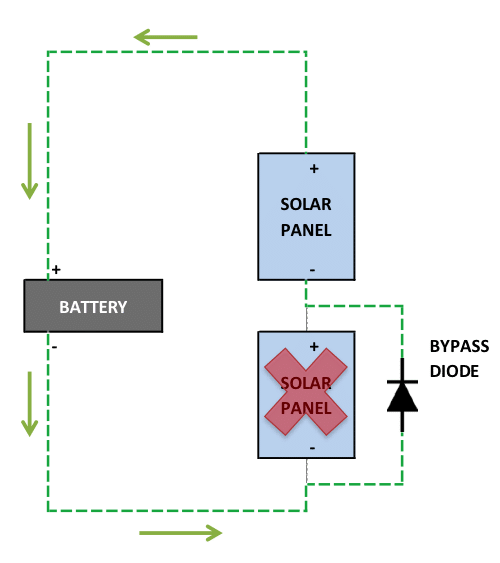
How does a bypass diode work?
Main functions
- Safety purpose: The bypass diode prevents “hot spots” by regulating the current from the sun.
- Increased power generation: When used in conjunction with an MPPT charge controller, the bypass diode can, in some cases, increase power generation in cloudy conditions.
Diodes in an array
To understand bypass diodes, you must first understand what a solar cell is and how it works. The diagram below depicts the basic solar cell structure. The easiest way to understand a photovoltaic cell is to look at an LED (light-emitting diode) in reverse. When an electric current is passed through an LED, it produces light; a solar cell works in the opposite way: you put light on it and it produces an electric current. Therefore, when light disappears from a solar cell (either at night, in the shadows, etc.), it actually consumes electricity instead of producing it. The bypass diode is there to regulate the current and work within the array.
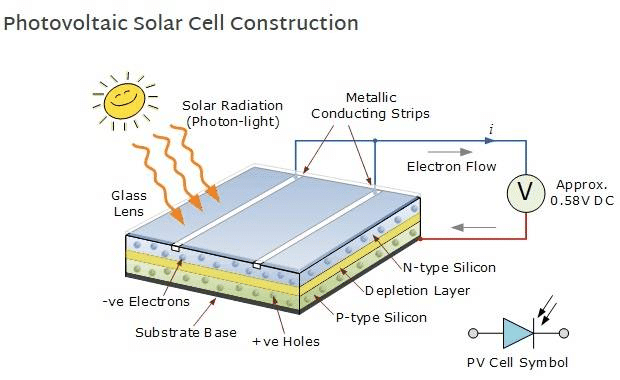
Why aren't there enough blocking diodes?
A blocking diode can be used to prevent current from flowing from the battery back to the array. This is usually built into the charge controller and can be done using diodes, transistors or other methods. Blocking diodes are suitable for strings or arrays, but do not work internally. Therefore, when shading occurs, the sunlit cells generate current that is consumed by the shading cells. This can create a “hot spot” and cause damage to the module. The bypass diode allows the current from the sunlight cell to “bypass” the shadow cell, preventing hot spots.
Thermal failure and escape testing of bypass diodes
Thermal failure of bypass diodes
The usual failure mode of bypass diodes is that they cannot withstand high temperatures and high currents, when part of the module cell is blocked leading to bypass diode conduction, the forward high current makes the diode heat up quickly and easily breakdown.IEC 61215 standard inside the relevant diode junction temperature test to detect the diode performance, however, this test can not be fully evaluated the reliability of the bypass diode.
For example, after the removal of blocking, the diode still has a breakdown phenomenon occurs, the reason for this is because the moment the blocking is removed, the diode from the forward conduction to reverse cut-off state, the diode itself to maintain a higher temperature, in the reverse leakage current continues to heat up. At this point, if the junction box heat dissipation is good, the diode temperature gradually reduced to normal, otherwise the temperature continues to rise until the diode thermal breakdown and failure, known as thermal runaway, Sungold has done in-depth research on this, through the rigorous thermal escape test to assess whether the junction box and diode to meet the requirements of use.
Bypass Diode Escape Test
IEC62979:2017 has made a standard specification for the heat escape test of bypass diode of photovoltaic module. The basic method of testing is in a high-temperature environment, continuous forward conduction of high current to reach the diode steady state, instantaneous switching voltage into the diode reverse cut-off, compare the temperature of the diode before and after the voltage switching.
If the forward conduction temperature is higher than the reverse cut-off temperature, it means that the diode reverse cut-off leakage current generated by the heat can escape smoothly will not lead to the diode junction temperature continues to rise, that is, the diode does not occur thermal runaway, on the contrary, the diode junction temperature will continue to rise and lead to thermal runaway, while monitoring the leakage current is lowered, and thermal escape test after the diode forward and reverse characteristics of the diode compared with the initial measurements do not have a significant change, then it is considered that thermal escape If there is no significant change in the forward and reverse characteristics of the diode after the thermal escape test compared with the initial measurement, then the thermal escape test is considered to have passed.
SUNGOLD follows the standard to implement the thermal escape test, in the high temperature test environment box, to the junction box through 1.25 times the short-circuit current (double sided component current at the same time taking into account the back side of the gain factor), lasts for one hour to ensure that the diode withstand high temperatures and high currents and is in a stable state, cut off the current instantly apply the reverse voltage, testing the junction box and the diode’s thermal escape performance. The junction box and diode are tested for thermal escape performance. The junction box and diode of AT&S module products have passed the thermal escape test for 1,200 cycles, making it one of the most demanding companies in the industry.
Role of bypass diodes in photovoltaic modules
Since the forward voltage drop and leakage current of a diode are inversely proportional to each other and are used to protect the solar panel circuits, the choice of diode needs to be a balancing act.
So it serves two purposes, firstly, when some solar panels have low voltage and others have high voltage due to the presence of the diode the higher voltage solar panels will not deliver power to the lower voltage solar panels. Secondly, it prevents the solar panels from being connected in reverse.
In addition, the diode is connected in parallel to the positive and negative poles of the solar panel, is to play a protective role. The diode positive is connected to the negative terminal of the power supply, and the diode negative is connected to the positive terminal of the power supply. In the normal power supply diode reverse bias, only when the power supply is reversed, the diode positive bias conduction,
this time the diode will be a short circuit of the back stage circuit, and thus avoid negative voltage damage to the back stage circuit. From the battery point of view is to protect the battery, to prevent the battery positive and negative poles are connected to the reverse, in case of reverse, there is a diode to protect, will not give the battery reverse charge. This equivalent circuit, the diode is used to simulate the expression of the PN junction built-in electric field, that is to say, the photovoltaic effect of a part of the current to be used to maintain the built-in electric field, and the rest can be output to the load, which is equivalent to a diode will be the photovoltaic effect of the current divided away from a part of the current.
Role of bypass diodes in solar panels
Since the forward voltage drop and leakage current of a diode are inversely proportional to the leakage current, used to protect the solar panel circuit, the choice of diode needs to be a balancing act.
So it serves two purposes.
- Firstly, when the voltage of some solar panels is very low and the voltage of other solar panels is high due to the presence of the diode the higher voltage solar panels will not deliver power to the lower voltage solar panels.
- Secondly, it prevents the solar panels from being connected in reverse. The diode is connected in parallel to the positive and negative poles of the solar panel, is to play a protective role. The diode positive terminal is connected to the negative terminal of the power supply, and the diode negative terminal is connected to the positive terminal of the power supply. In the normal power supply when the diode reverse bias, only when the power supply is reversed, the diode positive bias conduction, the diode at this time will be a short circuit of the back stage circuit, and thus avoid negative voltage damage to the back stage circuit. From the battery point of view is to protect the battery, to prevent the battery positive and negative poles are connected to the reverse, in case of reverse, there is a diode to protect, will not give the battery reverse charge.
- This equivalent circuit, the diode is used to simulate the expression of the PN junction built-in electric field, that is to say, the photovoltaic effect of a part of the current to be used to maintain the built-in electric field, and the rest can be output to the load, which is equivalent to a diode will be the photovoltaic effect of the current divided away from a part of the current.
Final thoughts
This lower voltage drop saves a full photovoltaic cell in each series branch of the solar array, so the array is more efficient because less power is consumed in the blocking diode. Most solar panels manufacturers include both blocking diodes and bypass diodes in their solar panels, simplifying the design.




